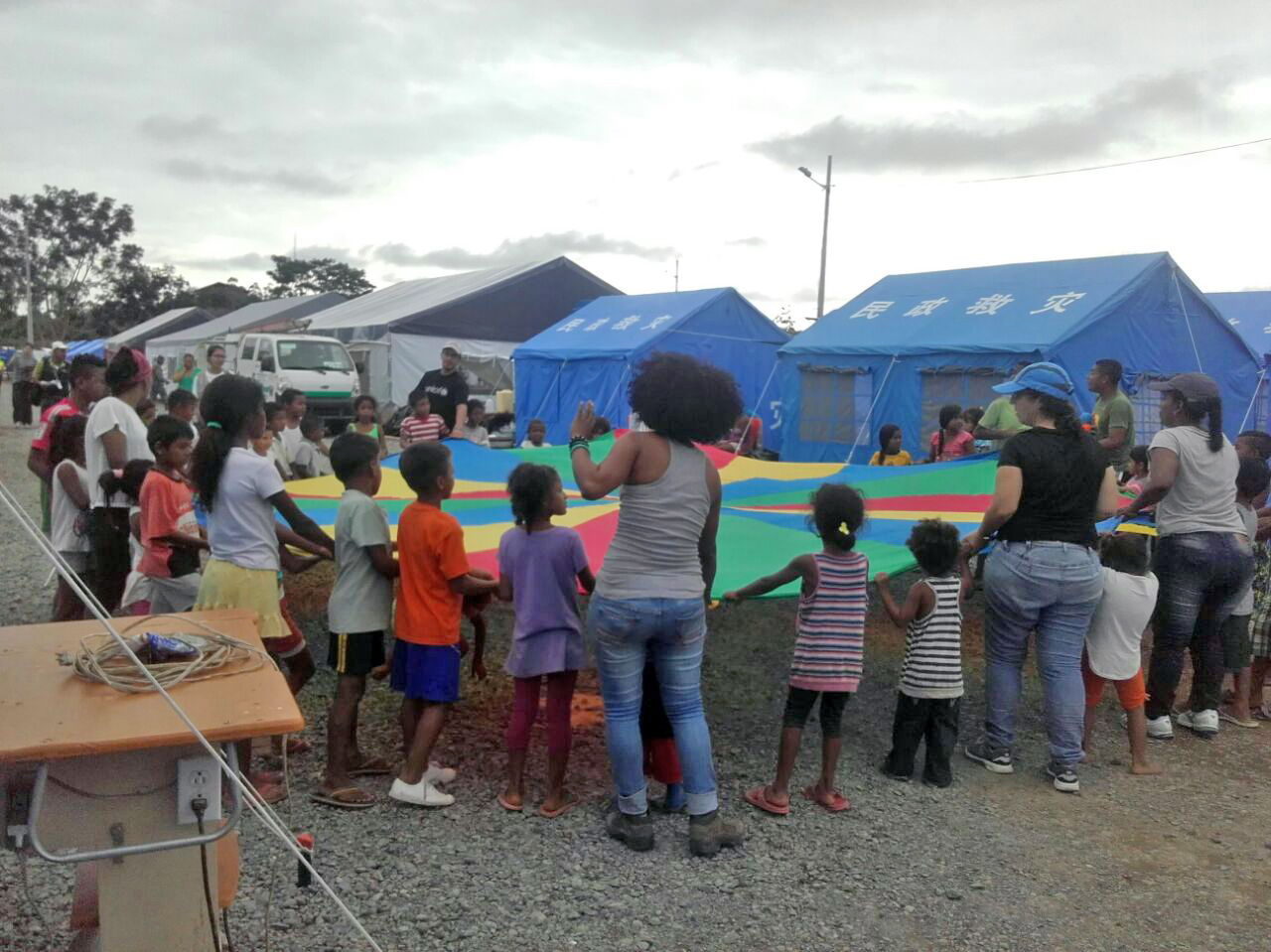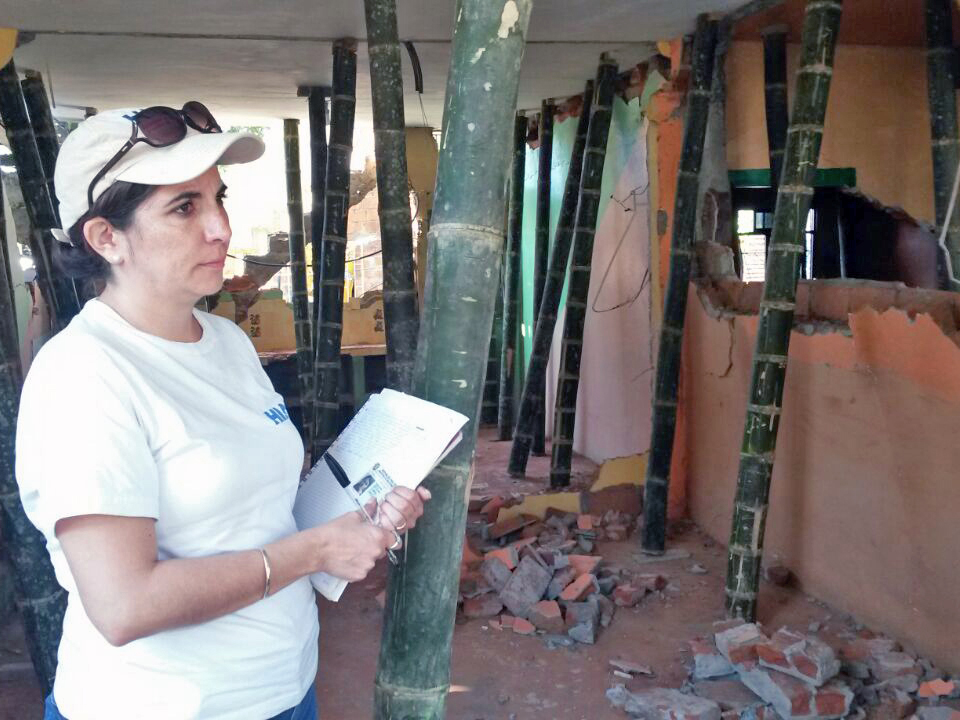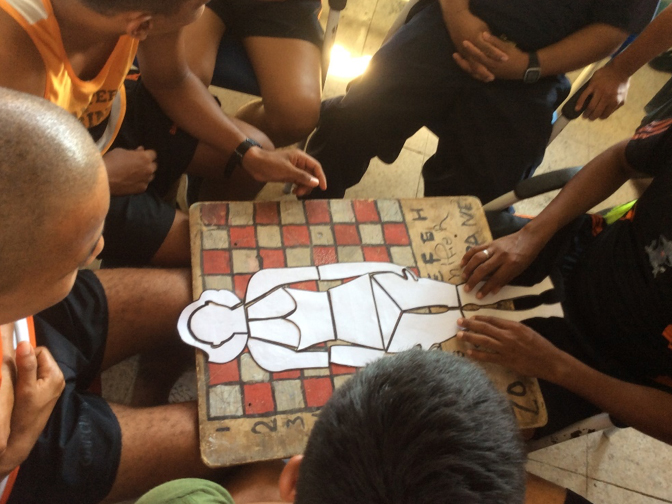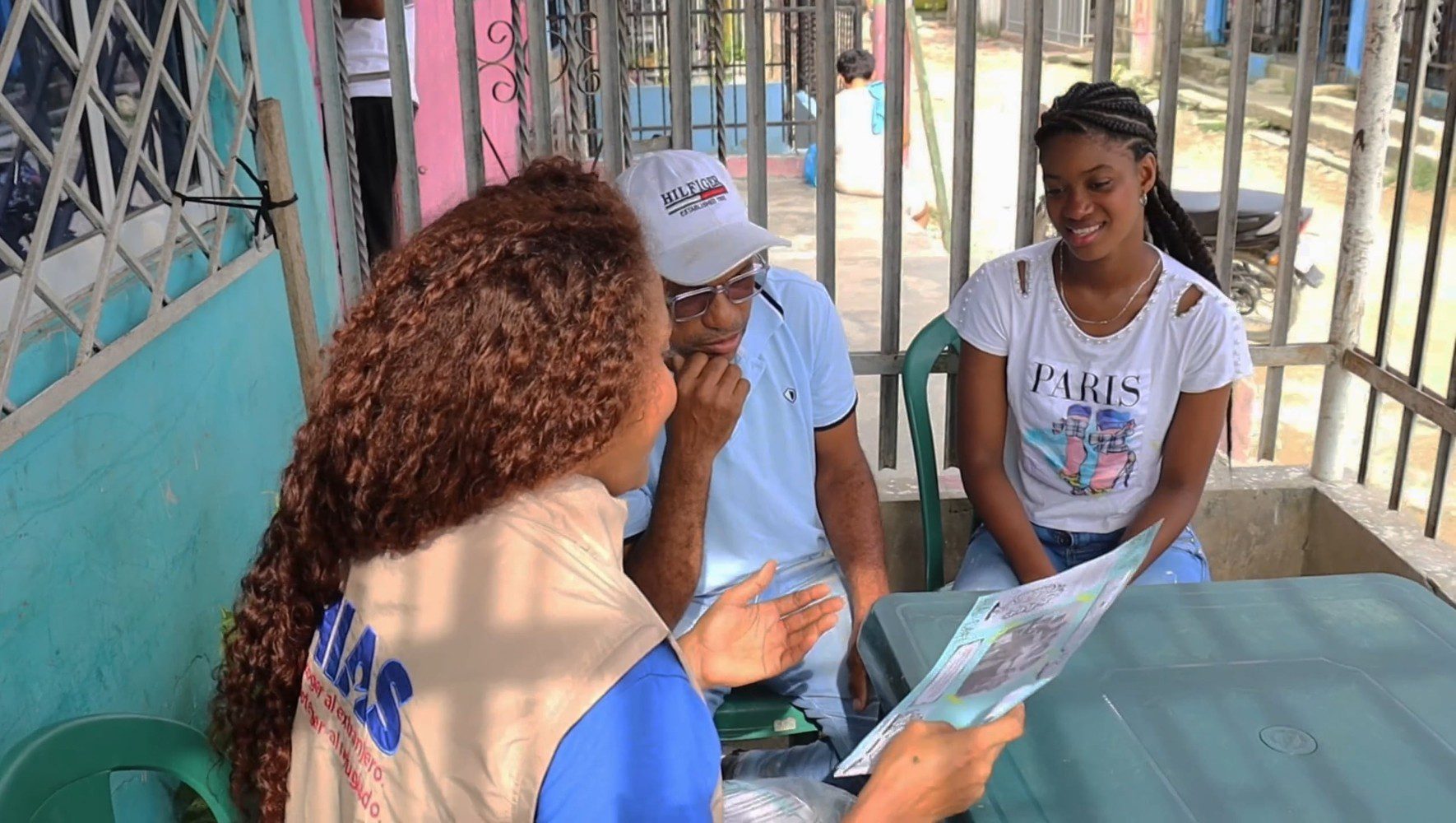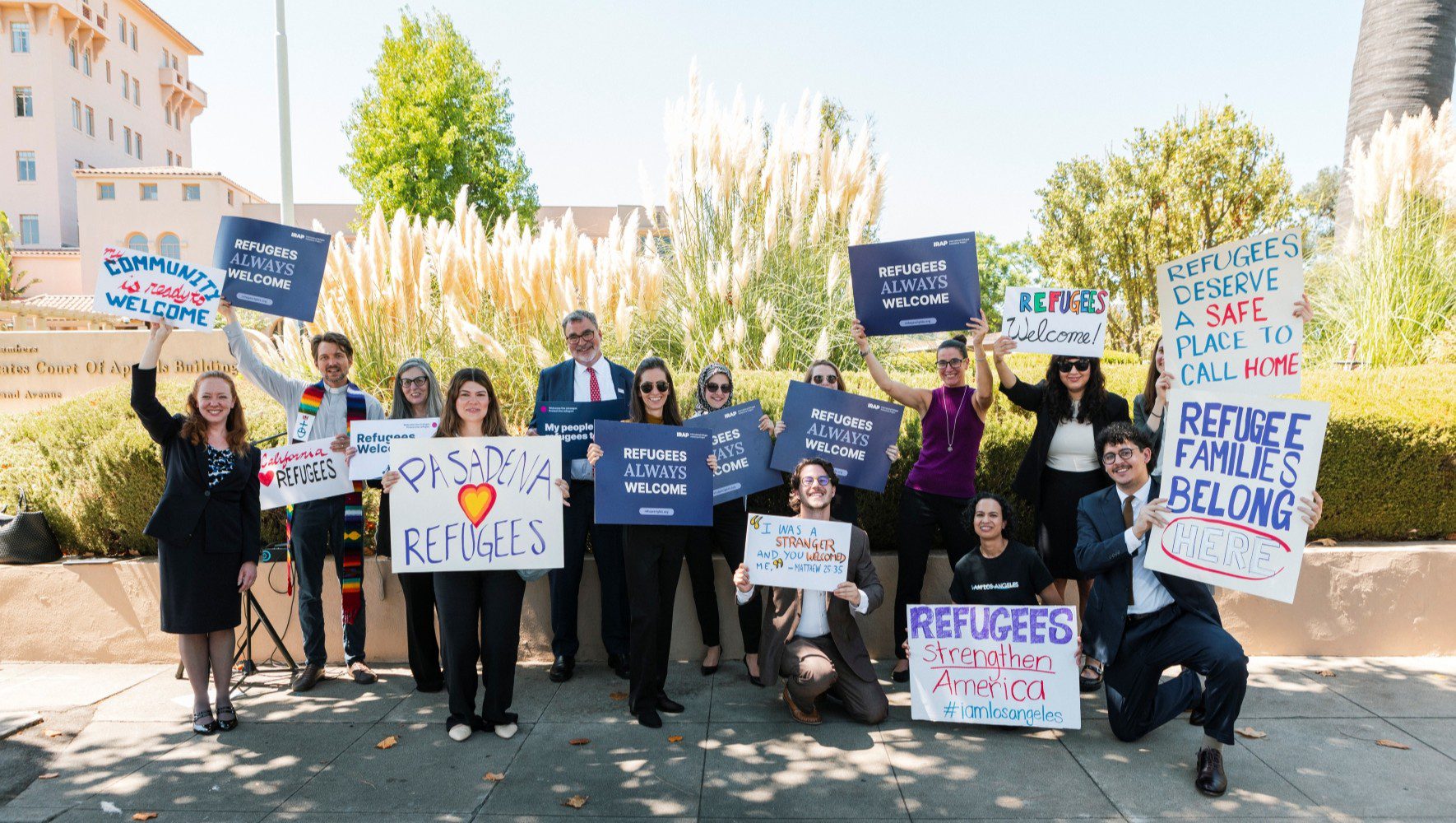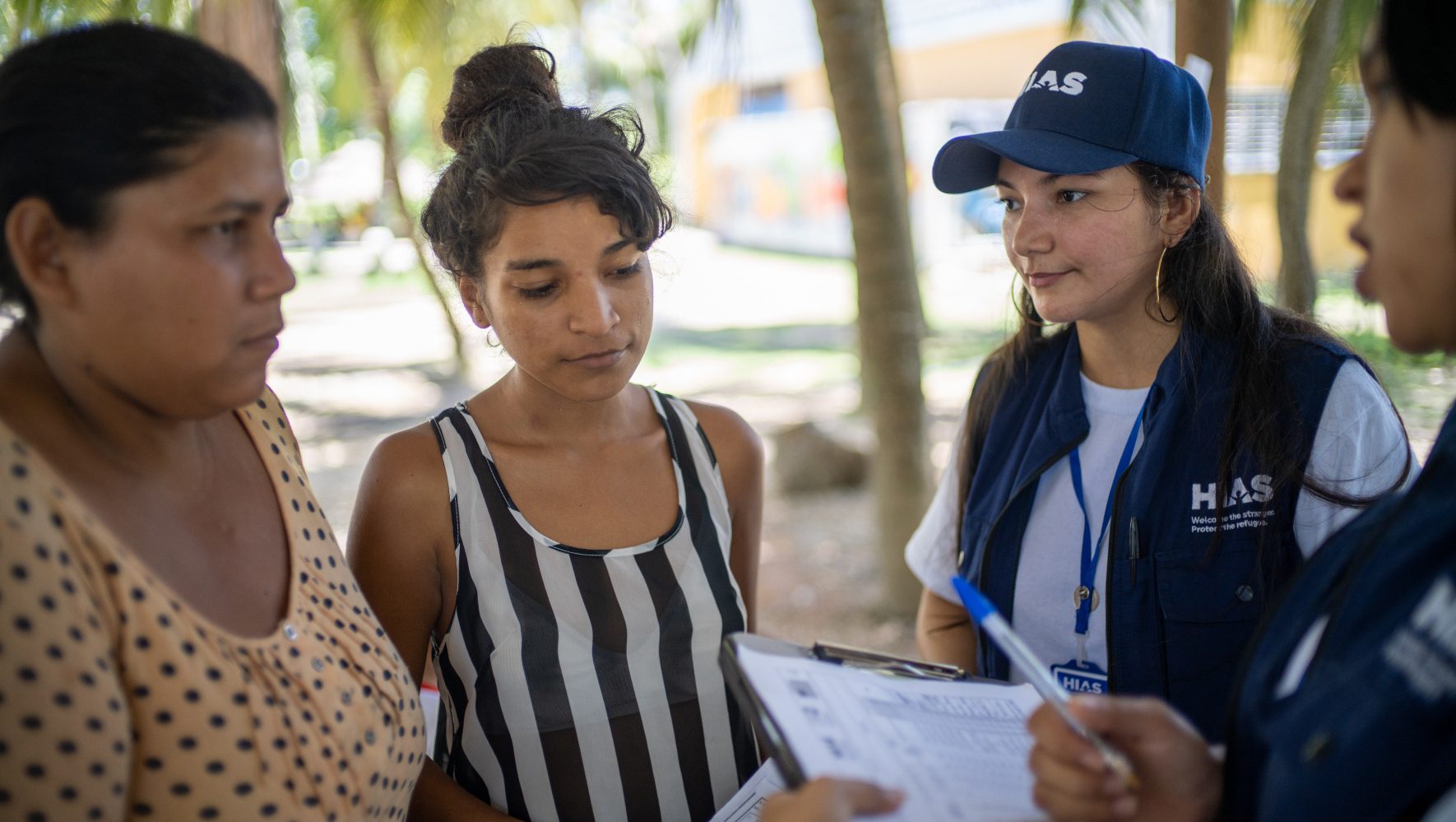Ecuador Rattled Again in Second Round of Quakes
By Rachel Nusbaum, HIAS.org
Jun 02, 2016
On April 16, Ecuador was hit by the worst earthquake it had seen in decades. Just one month later, on May 18, Ecuador was hit by another round of intense shaking as two large tremblors hit just hours apart.
The first struck at approximately 3 a.m. local time, with a magnitude of 6.7. The second, a 6.8 magnitude quake, came at midday. Both had their epicenters along the coast, just south of Esmeraldas, an area already heavily damaged by April's shocks.
“People here are still recovering from the last earthquake. To have two more, in a period of just a few hours, was really quite terrifying. People were distressed, both Ecuadorians and refugees here, but we are trying to be a pillar of support for people during this difficult time,” said Sabrina Lustgarten, Director of HIAS Ecuador.
One HIAS client has been engaged in relief efforts of his own. Carlos, a Colombian refugee, is a baker by trade. When disaster struck in April, Carlos got right to work. He baked thousands of rolls to help coastal families displaced by the quake.
"This country has given us a second chance after having lived under so much danger. So we want to thank the Ecuadorians," Carlos told UNHCR. "We know what it feels like to lose our home all of a sudden."
Prior to the May 18th quakes, HIAS Ecuador was already intensely engaged in earthquake recovery efforts, working closely with UNHCR, government ministries and other NGOs to coordinate on disaster relief, especially in the most affected areas.
In the province of Esmeraldas, HIAS held multiple workshops on self-care for public servants who are currently assisting the disaster area, teaching them how to cope with the stress of disaster relief work and avoid burnout caused by post-traumatic stress. By the end of the sessions, participants said they were more relaxed and able to work.
HIAS also organized a mission with UNICEF in order to identify the needs of people in Muisne and Chamanga, the areas most affected by the May 18 aftershocks. The next day, the staff visited a shelter and a camp for earthquake survivors, providing psychological assistance to both children and adults affected by the quake.
“We saw how anxiety, nervousness and feelings of insecurity have increased among the victims again, as a result of the aftershocks. Some of the somatic symptoms are insomnia, headache, blood pressure problems and fainting,” said Marianela Vega, manager of the HIAS Ecuador office in Esmeraldas.
[[{"fid":"1780","view_mode":"default","fields":{"format":"default","field_file_image_alt_text[und][0][value]":false,"field_file_image_title_text[und][0][value]":false},"type":"media","field_deltas":{"1":{"format":"default","field_file_image_alt_text[und][0][value]":false,"field_file_image_title_text[und][0][value]":false}},"attributes":{"style":"height: 323px; width: 300px; margin: 5px; float: right;","class":"media-element file-default","data-delta":"1"}}]]In Manta, a mid-sized coastal city a bit further south, several refugee families who HIAS was already assisting were particularly affected. Claudia*, a colombian refugee who has been living in Ecuador for 10 years, plans to remain even though her entire home was destroyed in the quake.
“We are so much safer here in Ecuador,” Claudia told HIAS staff who arrived to check on her and her family after the quake. “I believe that my family will overcome this situation.”
María Esther Guevara, a HIAS Ecuador psychologist, paid a visit to a shelter in Limones, San Lorenzo, where families displaced by the earthquake are living, to read and conduct therapeutic activities with the children there. Reading several tales about moving houses and displacement, such as “A New Home for Totoy”, helped them to talk about their current situation and also about the importance of supporting each other during this kind of difficulty.
“The children seemed to be coping quite well after the therapeutic activities,” Guevara said. “I believe that we should keep doing this, because there are still people who are very affected by the aftershocks and these kind of spaces are helpful for individual rehabilitation” Guevara said.
“People here are very nervous, after all that has happened in the last few weeks. Each aftershock brings with it a little fear. But together, we can help one another to rebuild—not only houses, but confidence,” Lustgarten said. “We are working to ensure that the invisible damage done is addressed, as well as the visible.”
*Name has been changed to protect the client’s privacy.

